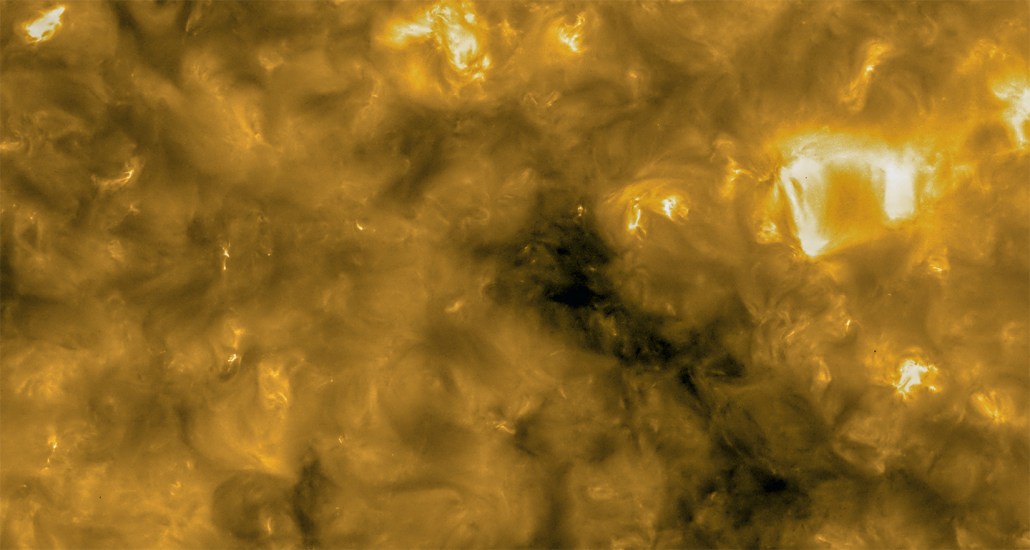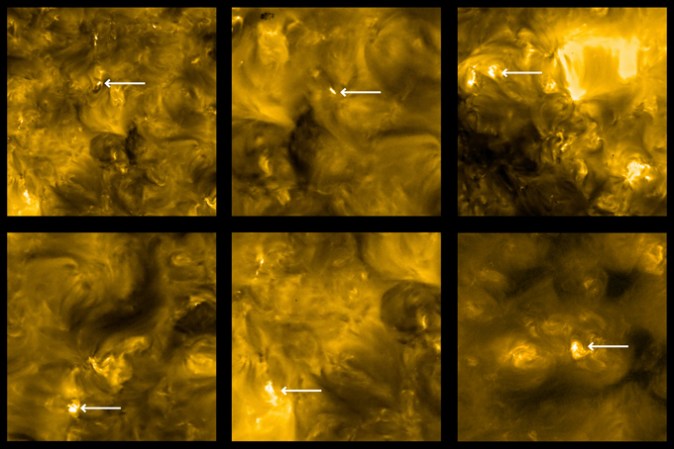
The first ultraviolet images from the Solar Orbiter spacecraft (one shown) are the closest yet taken of our star.
Solar Orbiter/EUI Team/ESA and NASA, CSL, IAS, MPS, PMOD/WRC, ROB, UCL/MSSL
Get out the marshmallows and toasting sticks. The closest images yet taken of the sun show tiny flares dubbed “campfires,” astronomers announced in a news conference on July 16.
The images are the first from Solar Orbiter, a new sun-watching spacecraft that’s a joint project between NASA and the European Space Agency.
“By looking from close by, we get so much sharper images,” said David Berghmans of the Royal Observatory of Belgium in Brussels in the news conference. The pictures were better than the science team expected. “When the first images came in, the first thought was, ‘This is not possible! It cannot be that good.’”
These never-before-seen campfire flares are thought to be little relatives of larger solar flares, powerful magnetic outbursts that shoot bright spurts of radiation into space (SN: 9/11/17). Campfire flares are a million to a billion times as small as typical solar flares. The smallest ones in the Solar Orbiter images are a few hundred kilometers across, “about the size of a European country,” Berghmans said. It’s not clear yet whether the flickers are just scaled-down solar flares, or if the two phenomena have different driving mechanisms.
Solar physicists think campfires could help explain one of the biggest solar mysteries: why the solar corona, the sun’s wispy outer atmosphere, is millions of degrees hotter than the solar surface (SN: 8/20/17). Together, the small but ubiquitous flares could be a source of energy to the corona that astronomers haven’t accounted for.
“These campfires are totally insignificant each by themselves, but summing up their effect all over the sun, they might be the dominant contribution to the heating of the solar corona,” said Frédéric Auchère of the Institut d’Astrophysique Spatiale in Orsay, France, in a news release.

Solar Orbiter launched February 9 with a suite of scientific instruments to observe the sun and its surroundings (SN: 2/9/20). The new images were taken May 30 with the Extreme Ultraviolet Imager camera when the spacecraft was 77 million kilometers from the sun, about half the distance from Earth. Berghmans and Auchère are the principal investigators for the orbiter’s ultraviolet camera.
Other spacecraft have swooped closer to the sun. The Parker Solar Probe has gotten as close as 24 million kilometers, collecting data but no direct photos because it gets too close (SN: 12/4/19). It will eventually reach 6 million kilometers from the sun’s surface. Ultimately, Solar Orbiter will come within about 42 million kilometers of the sun, and will be the first spacecraft to fly over the sun’s poles.







